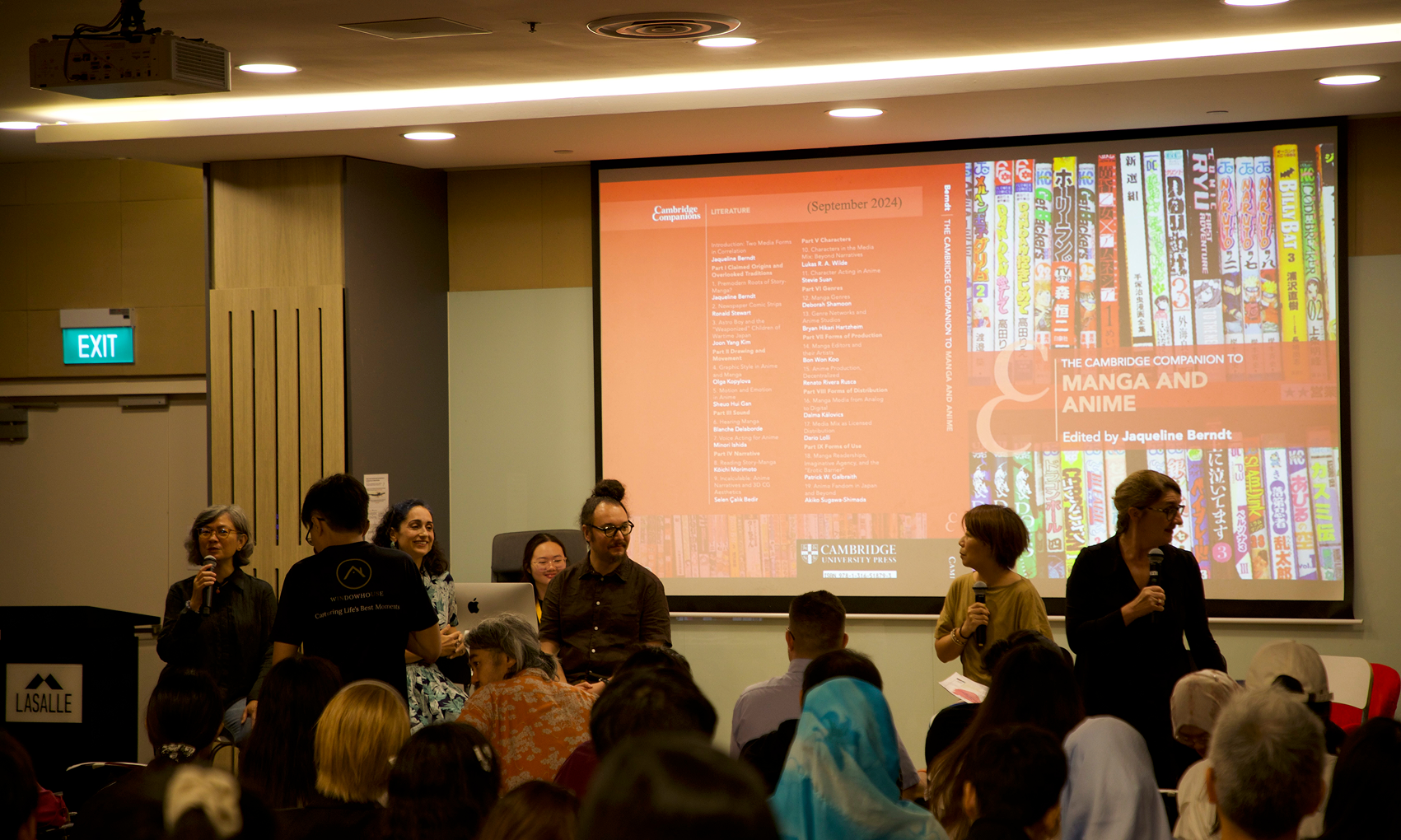Journal and book publications
Breaking the Fifth Wall: Creating Theatre on a Telepresence Stage
In the light of lockdowns, the authors’ Telepresence Stage research project (2021–22) developed effective, affordable approaches to connect theatre and dance performers from their separate homes and place them together within virtual sets online. Combining videoconference and chromakey technologies with virtual scenography, the performers are freed from Zoom-style walled boxes and are able to physically interact, including (virtually) hugging, kissing or fighting one another. The theatrical tradition of ‘breaking the fourth wall’ to address the audience reaches another level, with the actors seemingly breaking a fifth wall, of space and time. Eight UK theatre and dance companies undertook residencies to develop new online performance works and to test and develop approaches using a range of software and hardware systems. The research findings are analysed from technological and artistic, as well as phenomenological perspectives, including considering issues of telepresence intimacy, empathy, proxemics, third-person perspectives, and the uncanny. Case studies draw on the verbatim reflections of participants, offering insights into the unique joys but equally the challenges of working on a telepresence stage. The chapter argues and demonstrates how the project not only had a profound effect on the resident companies, but is of lasting value and impact for the creative industries. The use of immersive virtual scenographies proved a significant spur to creativity, taking theatre troupes into whole new realms, and creating sequences and illusions that would be impossible in live theatre. The experiments herald new ways of working and performance delivery modalities that will long outlive the pandemic.
Citation:
Dixon, Steve, and Paul Sermon. ''Breaking the Fifth Wall: Creating Theatre on a Telepresence Stage.'' Adaptation and Resilience in the Performing Arts: The Pandemic and Beyond, edited by Pascale Aebischer, and Rachael Nicholas, Manchester, Manchester University Press, 2024, pp. 65-89, doi: https://doi.org/10.7765/9781526172426.00011.
When strategy is a dirty word: The role of visuals in sensegiving to a skeptical audience
When setting a new strategy for their firm, managers engage in a range of sensegiving activities designed to introduce the new direction and explain the reasons for the change. These communication events commonly involve the use of strategic management terms and concepts to explain and justify the prescribed strategy. Literature thus far assumes that audiences understand and agree that these terms and underlying concepts are appropriate and relevant. Yet such views fail to explain strategy sensegiving in contexts where audiences of strategy presentations are ignorant or skeptical towards strategy concepts and ideas. We examine sensegiving under such conditions by analyzing a manager introducing a new strategy in a creative agency which expressed skepticism towards the concepts and practice of strategizing. Using data from video recordings of a sequence of internal strategy presentations, we identify three strategies designed to overcome prejudice towards strategic thinking while at the same time encouraging its use: winning the right to lead, finding resonance, and enrolling the audience into the strategy. We further find how these three sensegiving strategies are supported by carefully crafted visuals to either emphasize or de-emphasize aspects of the strategy and its supporting rationale. Our findings extend the literature on the practice of strategy by illustrating how the visual supports sensegiving efforts to guide a firm's interpretation of a proposed new strategic direction.
Citation:
van den Broek, Antonius, and Jonathan Gander. ''When strategy is a dirty word: The role of visuals in sensegiving to a skeptical audience.'' Long Range Planning, vol. 57, no. 1, 2024, pp. 1-22, doi: https://doi.org/10.1016/j.lrp.2023.102411.
Museum Funding: Moving up the Creative Economy Scale
The chapter discusses sustainable museum funding activities in the context of post-industrial economies. It explores these activities as driving factors that transform museums in the 21st century into dynamic actors of creative economy. The chapter argues that museums are increasingly adopting various ad hoc innovative funding strategies that enable them to generate self-earned revenue. They do it by (1) leveraging their collection’s assets, (2) integrating into the urban tourism economies, and even (3) monetizing their brands via franchising. The first section demonstrates how museum collections could be employed as economic resources that generate high profits. The following part illustrates the integration of commercial practices of museums into urban creative and tourism economies which bring visitors to the door and ensure sustainable self-earned income. Finally, the chapter explores museum franchising as an effective strategy employed by museums to monetize their cultural assets, such as their brand value. Drawing on this three-dimensional framework, the chapter conceptualizes and illustrates income-generating activities of museums turning them into more autonomous economic actors. Finally, the chapter reveals that contemporary museums in certain cases even converge with for-profit businesses, going far beyond corporate sponsorship to create hybrid forms of museum corporations.
Citation:
Grincheva, Natalia. ''Museum Funding: Moving up the Creative Economy Scale.'' Financial Management in Museums, edited by Yuha Jung, et al., London, Routledge, 2024, pp. 33-50, doi: https://doi.org/10.4324/9781003308003.
Geopolitics of Digital Heritage
Geopolitics of Digital Heritage analyzes and discusses the political implications of the largest digital heritage aggregators across different scales of governance, from the city-state governed Singapore Memory Project, to a national aggregator like Australia's Trove, to supranational digital heritage platforms, such as Europeana, to the global heritage aggregator, Google Arts & Culture. These four dedicated case studies provide focused, exploratory sites for critical investigation of digital heritage aggregators from the perspective of their geopolitical motivations and interests, the economic and cultural agendas of involved stakeholders, as well as their foreign policy strategies and objectives. The Element employs an interdisciplinary approach and combines critical heritage studies with the study of digital politics and communications. Drawing from empirical case study analysis, it investigates how political imperatives manifest in the development of digital heritage platforms to serve different actors in a highly saturated global information space, ranging from national governments to transnational corporations.
Citation:
Grincheva, Natalia, and Elisabeth Stainforth. Geopolitics of Digital Heritage. Cambridge, Cambridge University Press, 2024, doi: https://doi.org/10.1017/9781009182072.








